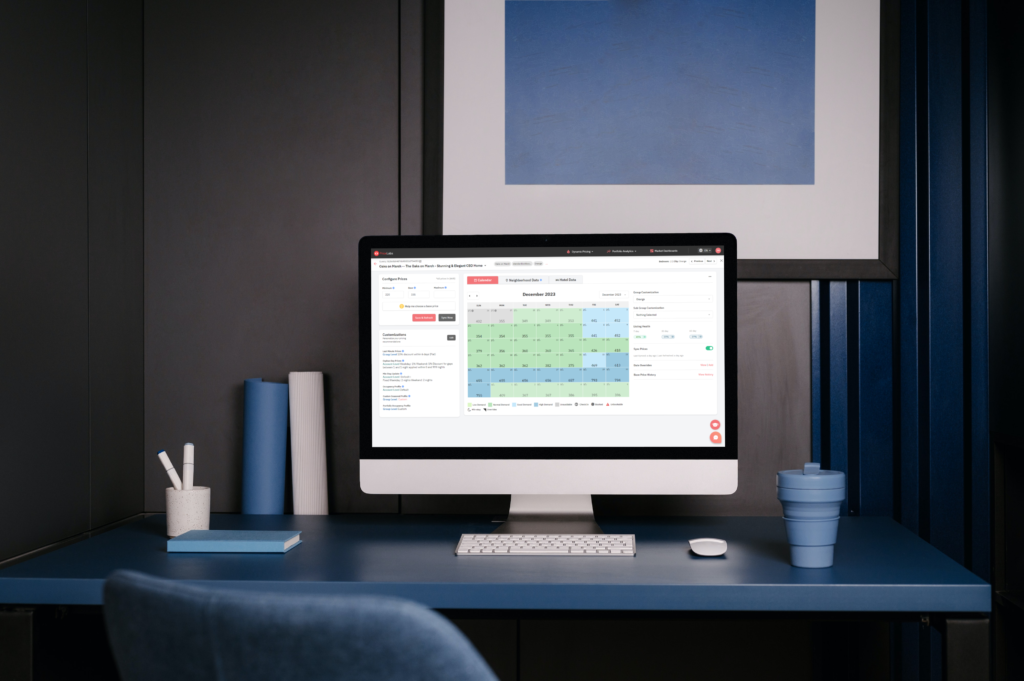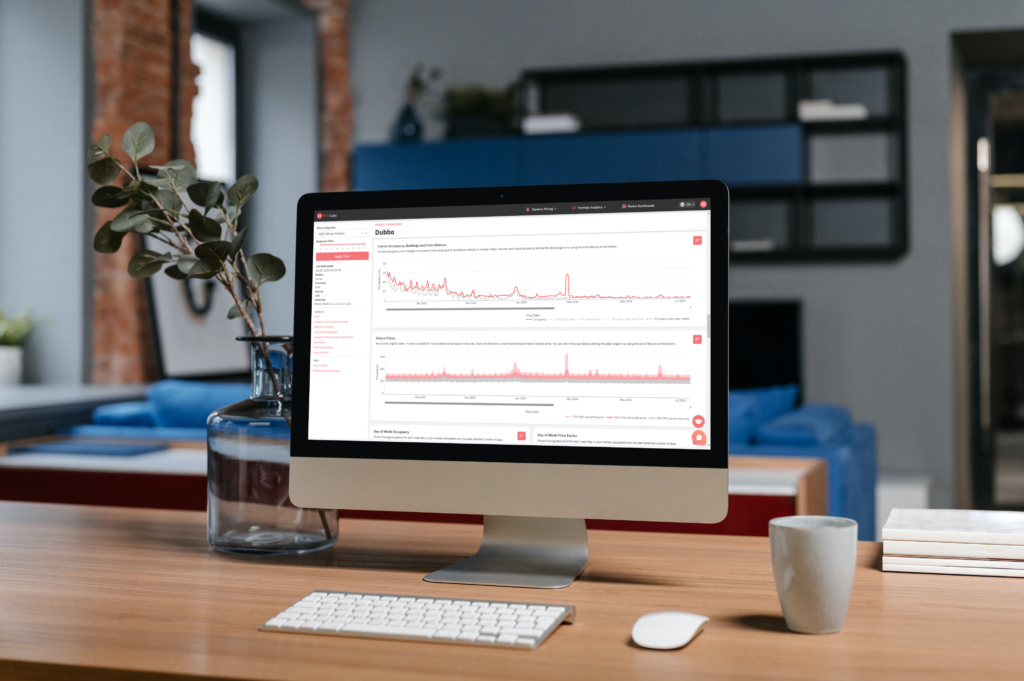
… and why do I need dynamic pricing?
Dynamic pricing analyses the local market and adjusts nightly rates to optimise hosts revenue with consideration to factors such as seasonality, demand, pacing, occupancy, and rules applied by the host. The result is a fine balance between keeping prices competitive and attractive to guests, while ensuring the host is able to maximise revenue from their property.

Dynamic pricing increases and decreases a property’s nightly rate on a per-night basis, increasing and decreasing the prices based primarily on current market data sourced from short-term rental platforms, such as Airbnb. Dynamic pricing tools also look at historical data to determine recurring events, seasonality, and more.
While dynamic pricing often raises rental prices to maximise income during peak periods, the opposite is also true: prices often drop during less popular times, and in situations such as orphaned nights that would otherwise be lost revenue for the host. This can also include reducing the prices for last-minute bookings to improve overall occupancy.
With this power though, comes additional responsibility on the host’s side. While automated dynamic pricing saves a lot of time manually setting prices for each night throughout the calendar, it is essential to spend significant time dialling in the settings through the dynamic pricing system. Each area and property is unique and reaching the perfect mix of early bird discounts, price increases for various local events and conditions, and last-minute discounts can be time-consuming and require extensive knowledge, experience, and testing to get just right.
So, how does dynamic pricing work for short-term rental hosts? There are several tools and services available that can help hosts to set and adjust their prices in real-time.

For hosts listing their property only on Airbnb, Airbnb’s own Smart Pricing feature is a good fit. It uses machine learning algorithms to set prices automatically based on various factors, with minimal configuration for hosts – only a minimum and maximum price for the property.
For more advanced hosts, and those listing on multiple platforms, another option is to use third-party pricing tools such as PriceLabs, which use similar algorithms to Smart Pricing but offer many more advanced customisation options. These tools allow hosts to set custom pricing rules based on their own preferences and goals, as well as provide detailed analytics and insights into market trends.
Configuration options in PriceLabs include:
Almost everything in PriceLabs can be customised to suit the host’s specific needs, and best of all, settings can be toggled and adjusted at a property, group, or account-wide level, which saves time for hosts with many listings, or properties in multiple areas. With so many settings and configuration options, it can be daunting for hosts to get started with third-party pricing tools, and many hosts engage a property management company to help.
It is important to note that while dynamic pricing can be a powerful tool for hosts, it’s not a one-size-fits-all solution. There are some potential downsides to using dynamic pricing, such as the risk of pricing guests out of the market or the possibility of leaving money on the table by misconfiguring the dynamic pricing settings. These risks are mitigated by monitoring the pricing and using local knowledge that the pricing tool may not have to double-check prices – but most hosts do not have the spare time to do this. Dynamic pricing also isn’t suitable for hosts that prefer a consistent nightly income, or for those who are already happy with their earnings as they are.
In conclusion, dynamic pricing is a powerful tool that can help Airbnb hosts to maximize their revenue and occupancy rates by adjusting their prices based on real-time market conditions. By using tools such as Smart Pricing or third-party pricing tools, hosts can take advantage of fluctuations in demand and supply to stay competitive in a crowded market. However, it’s important to remember that dynamic pricing is not suitable for all hosts, and careful consideration should be given to the potential risks and benefits before implementing this strategy.
Copyright © 2025 BNB Made Easy | Terms and Conditions | Privacy Policy